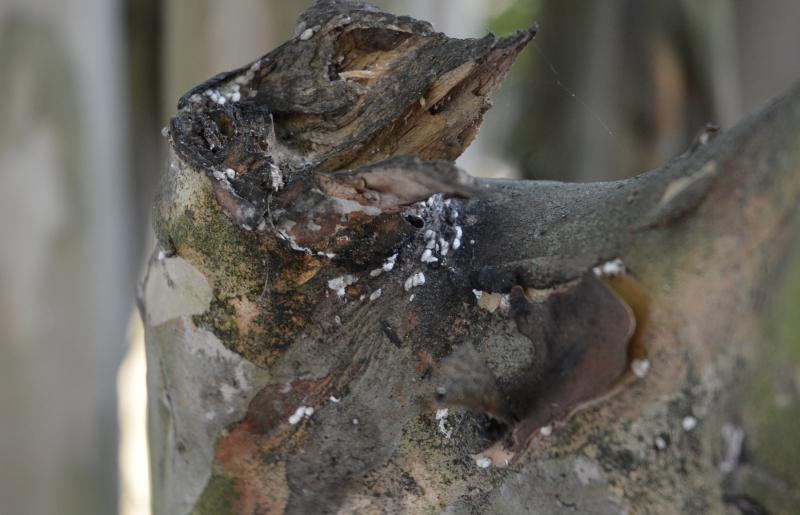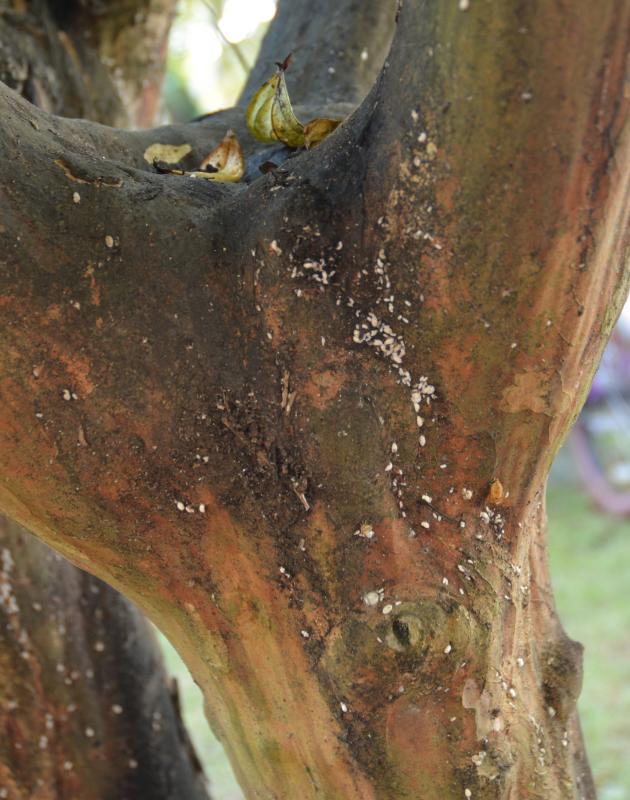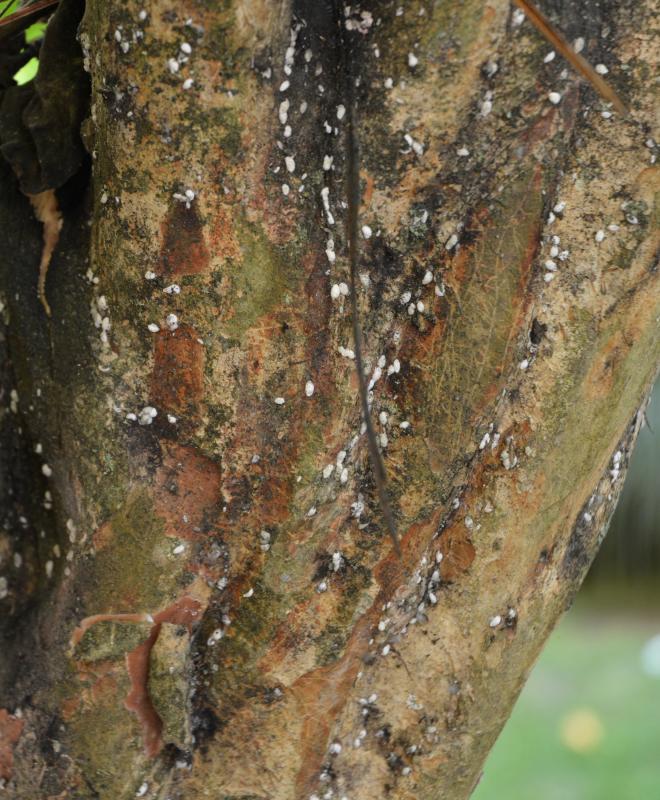Earlier this summer, the state issued a notice warning Sussex County residents that spotted lanternflies are now in the area.
Now, Rehoboth Beach resident Jan Konesey is raising the flag for another tree pest that leaves crape myrtles covered with small white pouches and a sticky honey dew that attracts other insects.
Konesey recently discovered Crapemyrtle Bark Scale on one of her trees. She and her husband were away for a few weeks dealing with a family emergency and when they returned, they discovered their side yard filled with giant hornets and black sticky stuff on every surface near the crape myrtles.
“It has arrived in Sussex County and is moving everywhere,” said Konesey in an email Aug. 19. “I had never heard of this before, and when I told my neighbors, they looked at their trees and had the same issue.”
Brian Kunkel, Ornamentals IPM extension specialist of the University of Delaware, said Crapemyrtle Bark Scale began showing up in Sussex County in 2020. It’s a disease that had been found on trees in the South and likely came to Delaware unnoticed when those trees were delivered to local nurseries, he said.
“They’re hard to detect and are frequently overlooked,” said Kunkel.
Kunkel said they’re still learning about the pest, but he thinks it can move from tree to tree three main ways – the pest attaches itself to an animal and goes for a ride to another tree; strong gusts of wind blow it from an infected tree to another one nearby; the branches of an infested tree are touching those of an uninfested tree and the pests simply walk across.
Kunkel said many people don’t see the infestation until after it’s well established. The pests are often overlooked because they are so small and they can be up in the canopy, he said.
Aesthetically, the pests cover the bark in white sacs, and then produce a honey dew that turns the bark dark and drips on anything below it. The dew attracts wasps, bees, flies, ants and other insects who want to feed on the free energy, said Kunkel.
Jan O’Donnell lives directly across the street from Konesey. A neighbor’s infested crape myrtle in the front yard is dropping the dew onto their cars, and they have infested crape myrtle trees in the backyard dropping the dew on the porch.
“You can’t miss it,” she said.
As for treatment, there are few chemical options and there are a few insects that eat the pests, such as lady beetles and lacewings, said Kunkel, suggesting a soil-applied neonicotinoid insecticide. They can be 75% effective or higher, but it won’t be 100%, he said.
According to a notice issued by the Delaware Department of Agriculture, selective pruning or a stiff wire brush could also be used to remove small populations.
To date, Kunkel said he’s not aware of the pest causing so much damage that it kills a tree, but he does recognize it can make a tree visually unappealing.
“Aesthetic deaths,” he said.
For more information, or to report an infestation, call the DDA’s Agriculture Plant Industries Section at 302-698-4577 or email jessica.inhof@delaware.gov.
Chris Flood has been working for the Cape Gazette since early 2014. He currently covers Rehoboth Beach and Henlopen Acres, but has also covered Dewey Beach and the state government. He covers environmental stories, business stories and random stories on subjects he finds interesting, and he also writes a column called Choppin’ Wood that runs every other week. Additionally, Flood moonlights as the company’s circulation manager, which primarily means fixing boxes that are jammed with coins during daylight hours, but sometimes means delivering papers in the middle of the night. He’s a graduate of the University of Maine and the Landing School of Boat Building & Design.























































